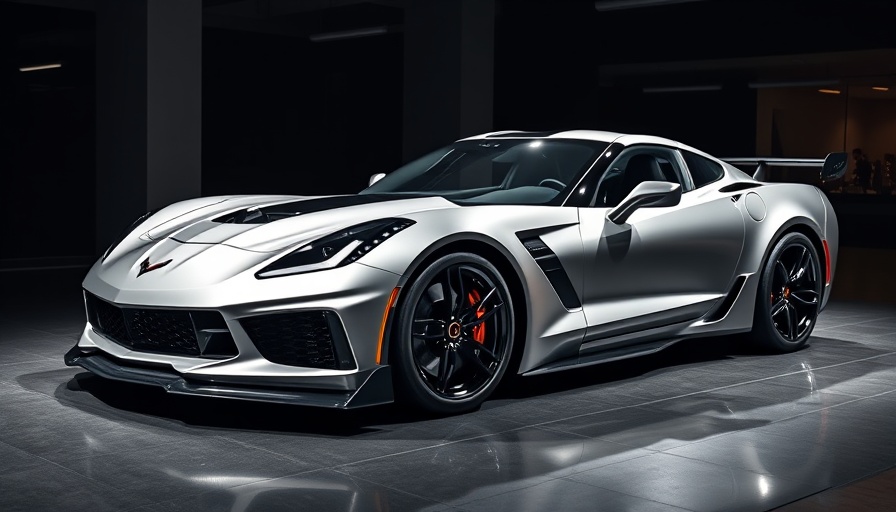
The Evolution of the Corvette: From Classic to Cutting-Edge
The Chevrolet Corvette has always been a symbol of American engineering prowess, evolving over the decades from a modest roadster to a formidable performance beast capable of challenging even the most elite European supercars. The upcoming 2025 Corvette ZR1, already heralded for having the most powerful engine Chevy has ever produced, epitomizes this evolution. With predictions hinting at 850 horsepower from a twin-turbocharged flat-plane crank V8, the ZR1 is designed for speed and engineering excellence.
Enter the ZR1X: A New Frontier
Rumors are swirling around a potential game-changer in the Corvette lineup: the ZR1X. With an astonishing projected output of 1,250 horsepower, this hybrid marvel could redefine the performance standards not just for Chevrolet but for the entire automotive industry. According to Tony Roma, Corvette Chief Engineer, the ZR1X is merely the latest chapter in the Corvette's storied journey. As stated in a recent interview, "The ZR1X is not the end of the story; it’s just the latest chapter." This statement ignites enthusiasm among enthusiasts to ponder what’s next on the horizon for America's iconic sports car.
Aiming for Track Supremacy
Beyond raw horsepower, the ZR1X is poised to take on record-setting performance benchmarks, particularly at the Nürburgring. In an era where manufacturers are unabashedly competing for track supremacy—the Mustang GTD currently boasts the fastest lap by an American car—the stakes have never been higher. Roma’s confident assertion conveys Chevrolet’s fierce ambition: “We want to be the fastest American car.”
Competitive Landscape of American Performance Cars
The quest for dominance among American automakers has created a vibrant ecosystem in which performance cars are no longer just about speed; they encompass precision engineering, advanced aerodynamics, and cutting-edge hybrid technology. As the ZR1X looks to capture the title of the fastest American car, it symbolizes a larger trend influencing the automotive market today: the integration of hybrid technology into traditional high-performance vehicles.
Future Predictions: What Lies Ahead for the Corvette?
If the ZR1X is not the zenith, what could possibly follow? As automotive technology leaps forward, we can expect innovations focusing on reducing weight through extensive use of carbon fiber, implementing advanced aerodynamic features inspired by racing prototypes, and evolving hybrid systems that improve torque and traction. Future models may push the performance envelope even further, enticing collectors and racing enthusiasts alike.
The Impact of High-Performance Vehicles
For consumers, owning a high-performance car like the ZR1X is about more than just speed; it’s a statement of personal identity. The allure of performance vehicles often intertwines with the emotional experiences of ownership, building a community where enthusiasts share their admiration for these engineering marvels. The bragging rights that come with owning a vehicle capable of conquering legendary tracks significantly enhance its desirability.
Consumer Takeaways: The Value of the Performance Arms Race
As automotive enthusiasts analyze the newest developments, it's clear that the evolution of cars like the Corvette ZR1X represents more than just technological advancements; it reflects changing consumer interests in the automotive sector. Buyers now expect vehicles that combine traditional combustion with innovative hybrid capabilities to deliver a thrilling experience. Understanding these shifts is crucial for both consumers and industry observers.
Final Thoughts: The Future of the Corvette
As we stand on the brink of a new chapter in automotive history, Corvette enthusiasts are called to buckle up. The narrative surrounding the Corvette is one of continuous evolution, pushing the boundaries of what is possible in performance vehicles. Future models are sure to surprise, continuing the storied legacy of America’s sports car.
For anyone considering the thrilling future of the Corvette lineup, this evolution promises to be as exciting as the car itself. With innovative technology and performance on the line, staying informed about these developments can lead to more insightful choices when it comes time to invest in a new vehicle.
 Add Row
Add Row  Add
Add 




Write A Comment